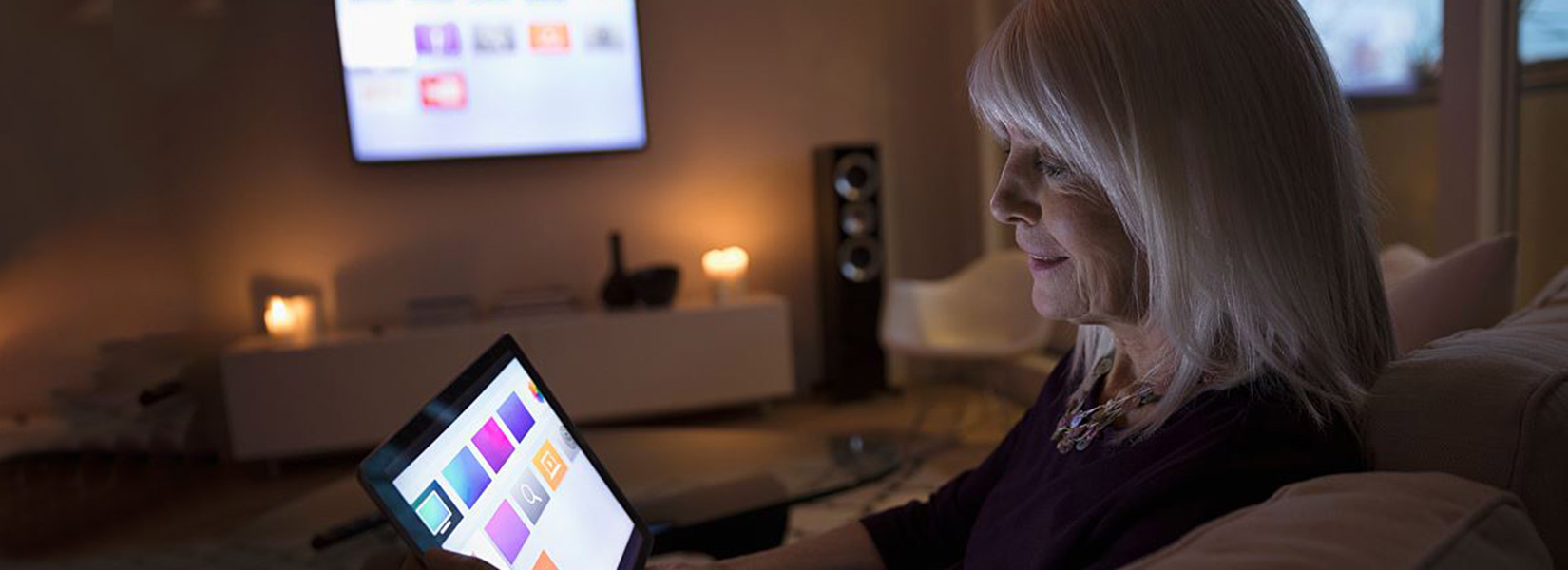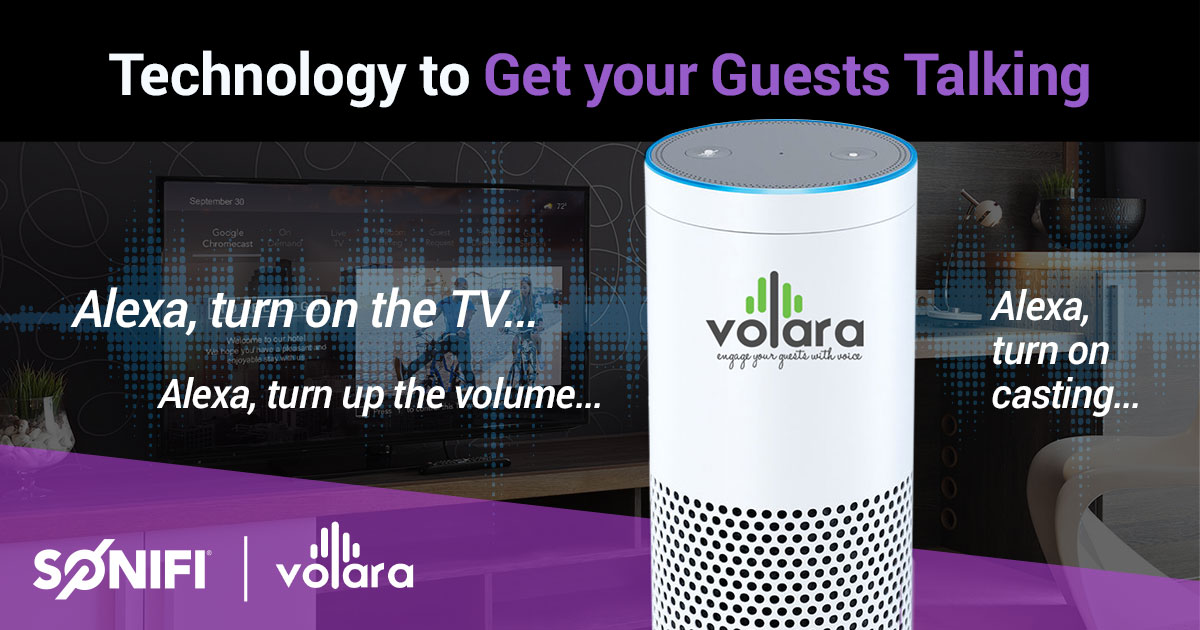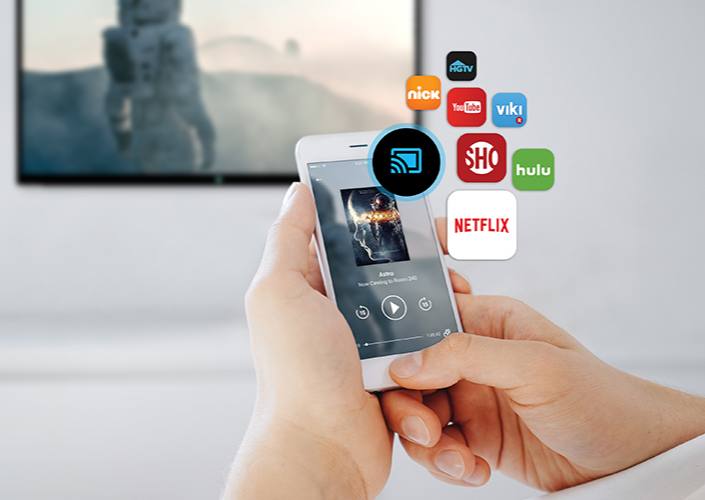For In-Room Technology, Look to the Living Room
LOS ANGELES (Apr. 1, 2019) — Connected technology is advancing quickly and hotels must be ready to meet or exceed the experiences guests have in their homes. Consumer trends show that guests expect a multiple device experience integrated seamlessly with the in-room technology. Those expectations include but are not limited to streaming, voice assistants, and environmental controls. These disparate products must work together over the same infrastructure to deliver a simple and seamless guest experience. With some smart planning and careful consideration in selecting a solution provider, it is possible to build a technology ecosystem that benefits both guests and hoteliers.
Multi-Device Is a Must
In the year ahead, hoteliers should research and vet in-room platforms that support multiple touchpoints and devices that can work together—even to accomplish the same tasks. It is a common occurrence for a guest to use a remote or mobile device to browse and select a movie/channel to watch on the hotel’s in-room TV, but then put that device aside and later wish to have other options to adjust volume or set a sleep timer using voice commands, just like they do at home. Hoteliers may think that seems unnecessary, but it’s time to recognize that guests expect to have their preferred choices of technology available.
People today use multiple technologies in tandem and move between technologies as part of their regular routines. For example, consider how travelers make their travel plans—94 percent switch between devices as they plan or book a trip and nearly half will make their decision on a smartphone but book the trip on another type of device. This multiple device use is not limited to tech-savvy travelers—80 percent of sports viewers use another device while watching live sports on TV to search for stats or message other fans. In addition, households today average more than seven video access devices, whether smart TVs, computers, tablets, etc. Users continually make choices about the best way to leverage technology in every situation.

Guests are not holding hospitality to an extreme standard; people are simply accustomed to having these choices every day. We can pay with a credit card, a debit card, a phone tap, use cash, or, in some places, pay with a check. We can adjust the temperature in our homes using the thermostat, a voice assistant, or an app. Hoteliers need to accept multiple technology use is not a trend or something only a few people are doing. It’s time to build in-room technology that offers guests several touchpoints and a seamless experience between these options.
Working with providers that offer flexible and expandable connected technology is the best way to surprise and delight guests while future-proofing an investment. The right product and provider can integrate the technology and maintain compatibility with other systems and components already in the room. This lets hoteliers reap the benefits of tagging on to existing in-room systems—such as using the in-room TV—to adjust the thermostat or contact the front desk.
Having flexibility and breadth is crucial because guest preferences vary. One guest orders pizza from a smartphone app while another selects a meal from a room service menu on the TV. Guest preferences also change over time. It used to be a ‘must’ to put flight schedules on the TV screen but now guests prefer to use their mobile devices to check flights online and arrange transportation. These preferences will continue to change, so it is important to choose integration partners wisely. Experienced providers with integration-capable platforms and partnerships in multiple top technologies offer the advantage of longevity for the investment.
Keep Tabs on the Consumer Market
Hospitality technology has been lagging behind the home space. Hotels are working to adopt the same technologies found in homes and trying to create a similar connected experience for their guests. Consumer adoption for smart home devices continues to grow, which means guests’ expectations to find these services in their home-away-from-home will continue to grow as well.
Device streaming and on-demand video viewing is all but ubiquitous now in the home market. In U.S. broadband households, 60 percent of TV viewing is nonlinear programming and nearly half of U.S. consumers stream at least once weekly.
Guests have the expectation that they can watch TV at a hotel the same way they do at home. When guests bring their own streaming devices and they don’t work on a hotel TV and wireless network, that can prompt negative reviews.
The reality is that streaming in hotels is more complicated than guests understand. Properties must deal with privacy, security, and network concerns that are very different from the home market.
Voice assistants are another growing trend. One in four U.S. internet users currently owns a smart home device. In homes, people use voice assistants to get more information about their day—news, weather, schedules, etc. They set timers as well as ask questions. Voice assistants also control media, environmental controls, and security features.

Voice assistants are already doing similar things in hospitality. A room compendium can list the hours of an onsite restaurant, but voice assistants enhance that experience by providing a friendly voice telling the guest the hours and offering to make a reservation or list featured chef favorites. It’s a conversation where the brand listens and immediately meets a need, maintaining a relational presence in the room. Voice integration makes it easy to convert inquiries into revenue by making spa appointments, ordering show tickets, etc. It also offers immediate service recovery options.
Environmental controls are also becoming more ubiquitous. More than 40 million homes will have a smart thermostat by 2020. The biggest advantage of connected controls is energy management. New technology allows remote or automated management of in-room energy consumption. Occupancy sensors can turn off the lights, the TVs, and adjust the temperature when guests are not in their rooms for extended periods of time, saving resources. Hotel system integrations can change in-room settings at checkout or upon check-in. The technology should produce both guest benefits and operational efficiencies.
Bring It All Together
Today’s in-room technology ecosystems are becoming more intertwined all the time. Be careful not to choose bits and pieces that may not have the capacity to evolve or expand. Look for platforms and providers that integrate well. A company well-versed in connected technology should be able to provide system data and offer guest usage data, so hoteliers can see how much of their technology investment is being used and make wise decisions regarding future additions.
Ultimately, hotels are building an ecosystem where technologies must coexist. Invest first in foundational pieces like the WiFi network and a versatile API. Then, add pieces over time while still providing a seamless guest experience. Connected technology is here and it needs to be part of a hotel’s go-forward strategy.
View press release on Lodging Magazine.
